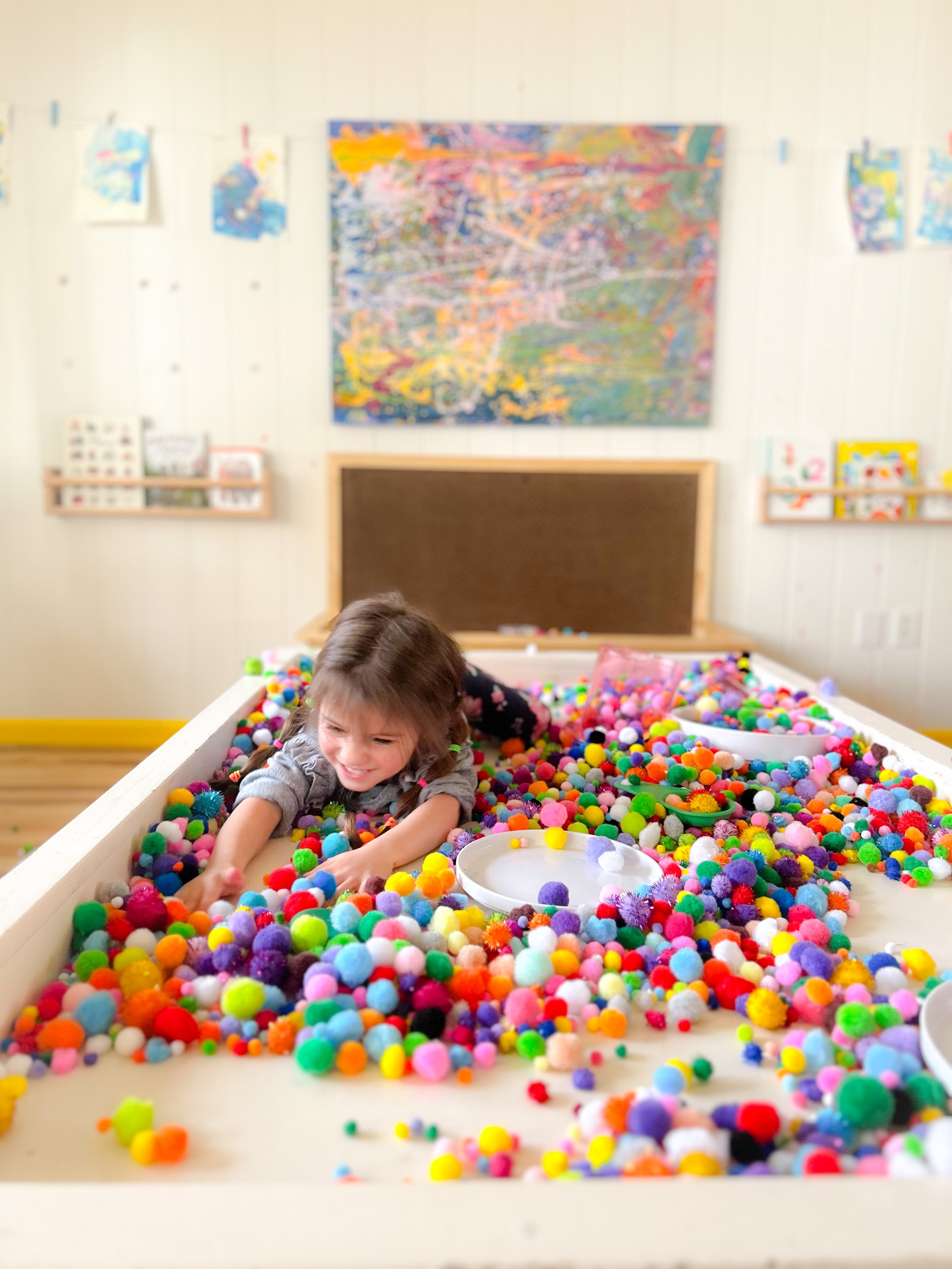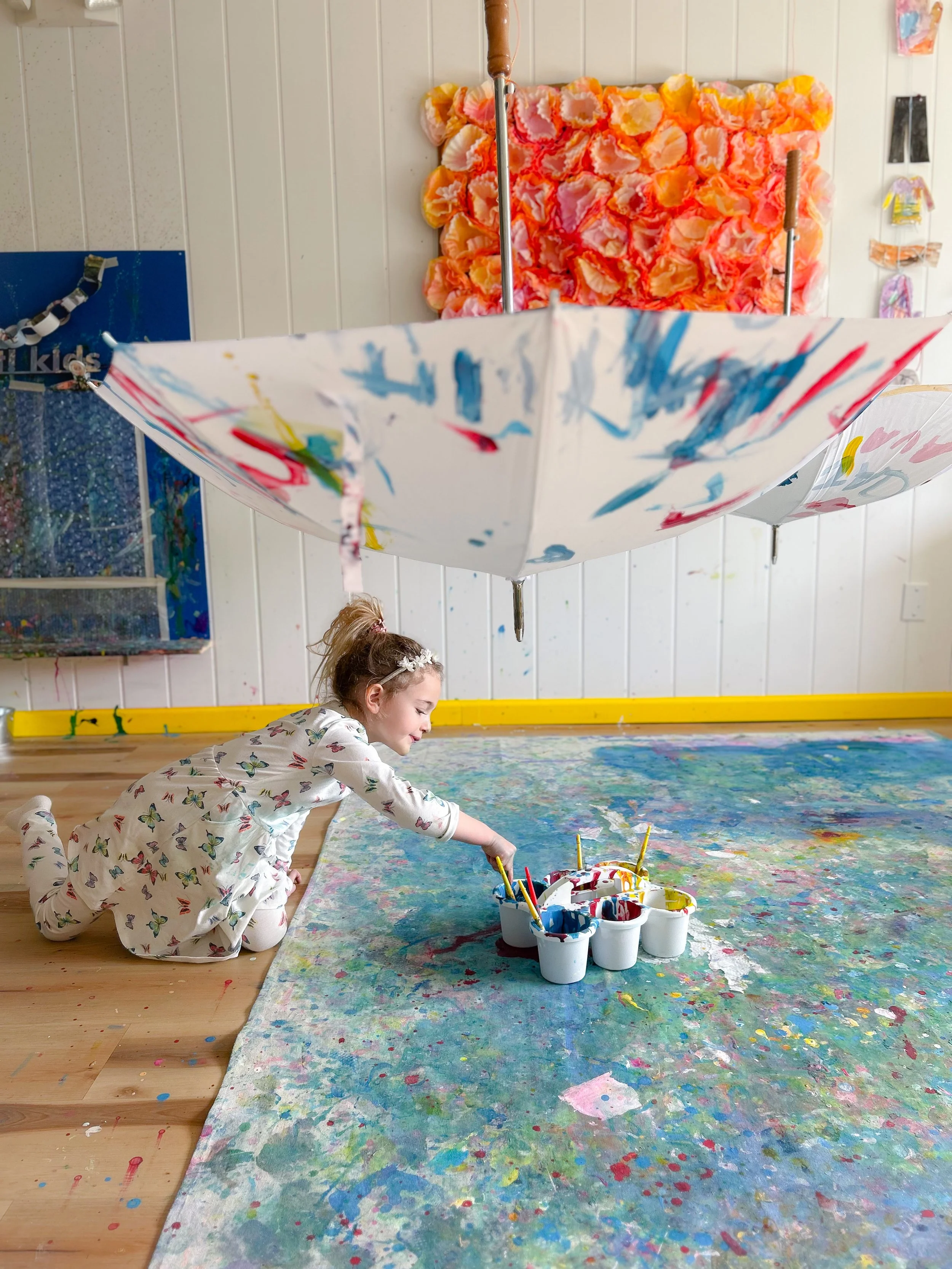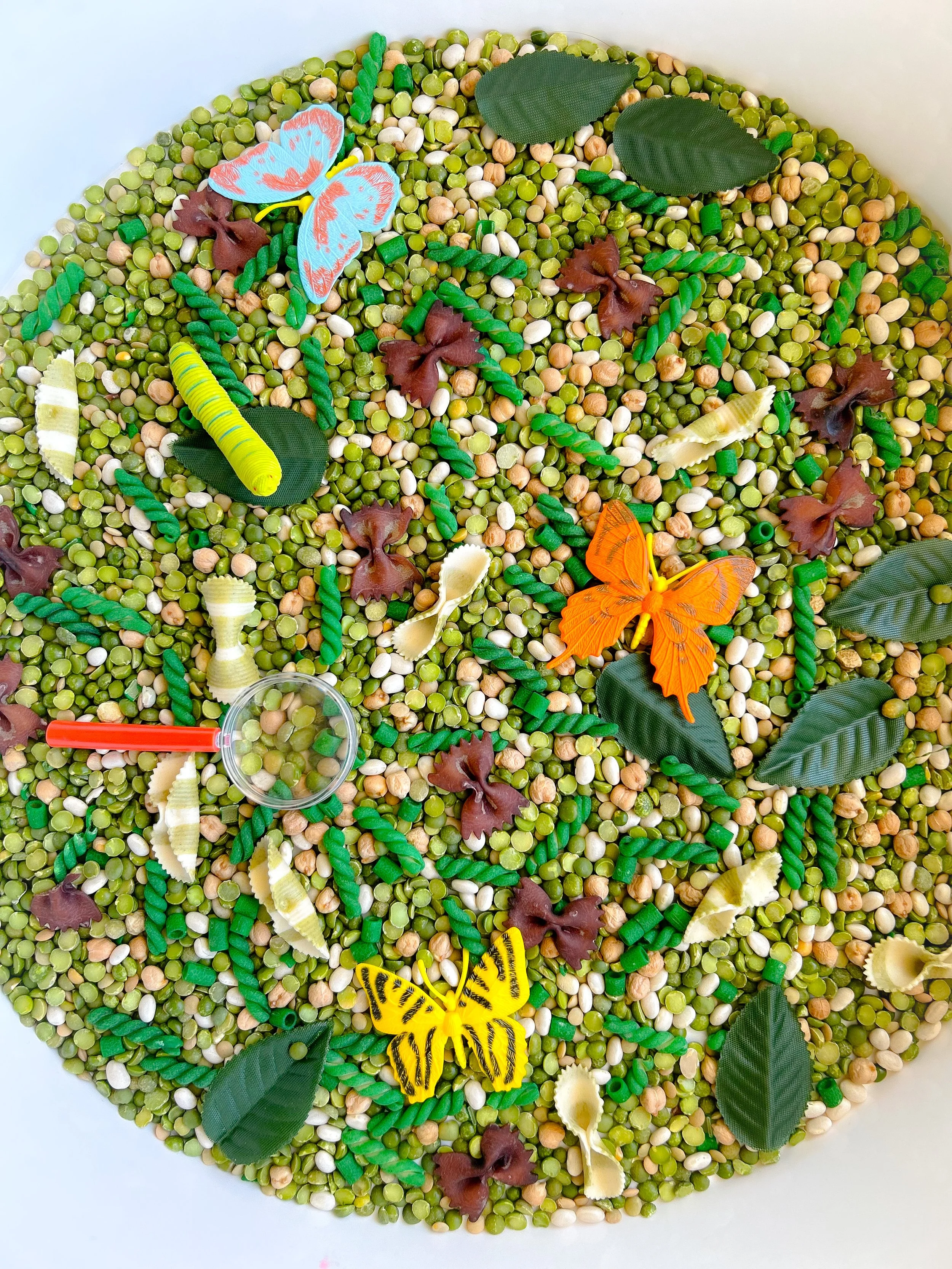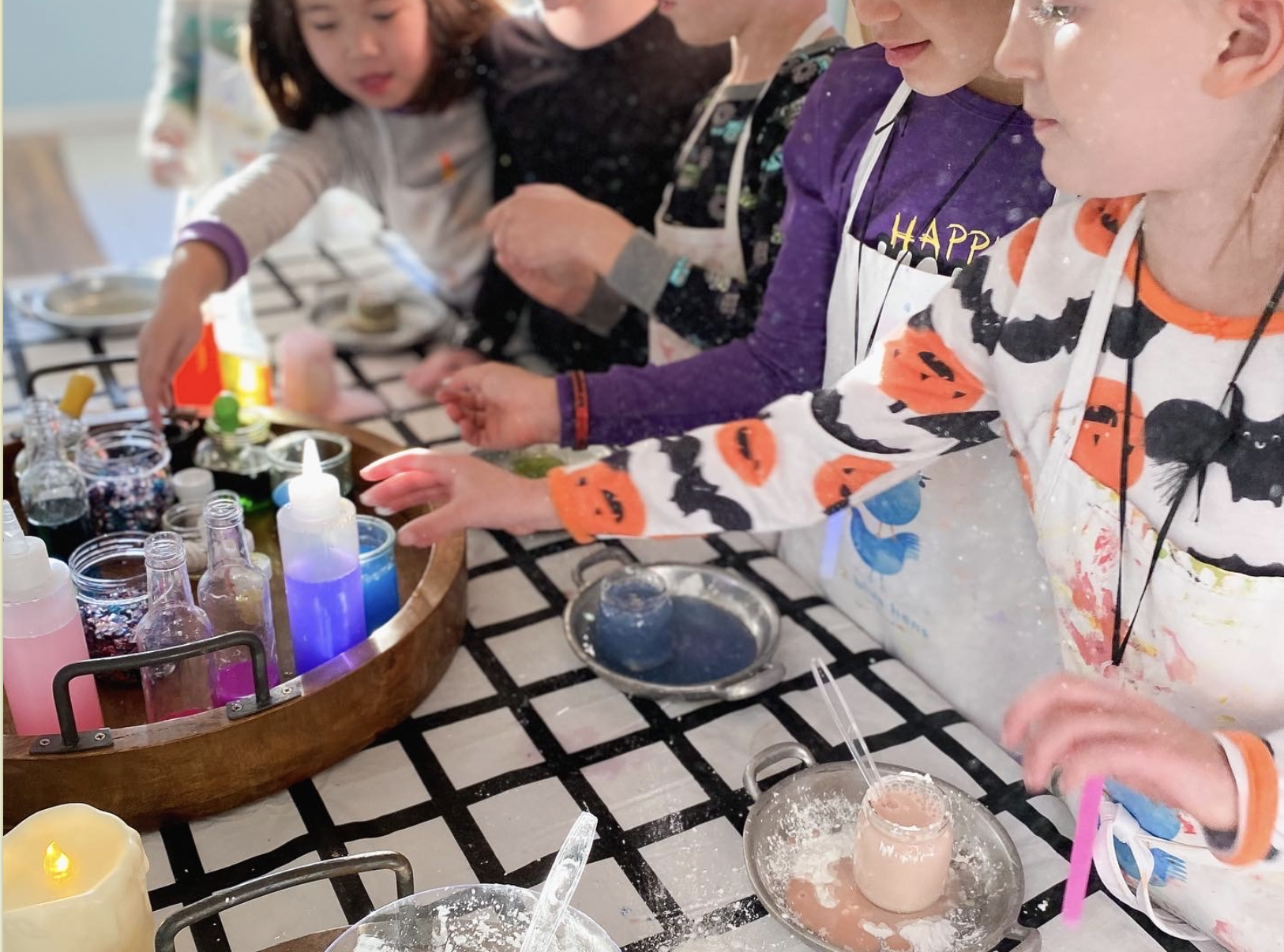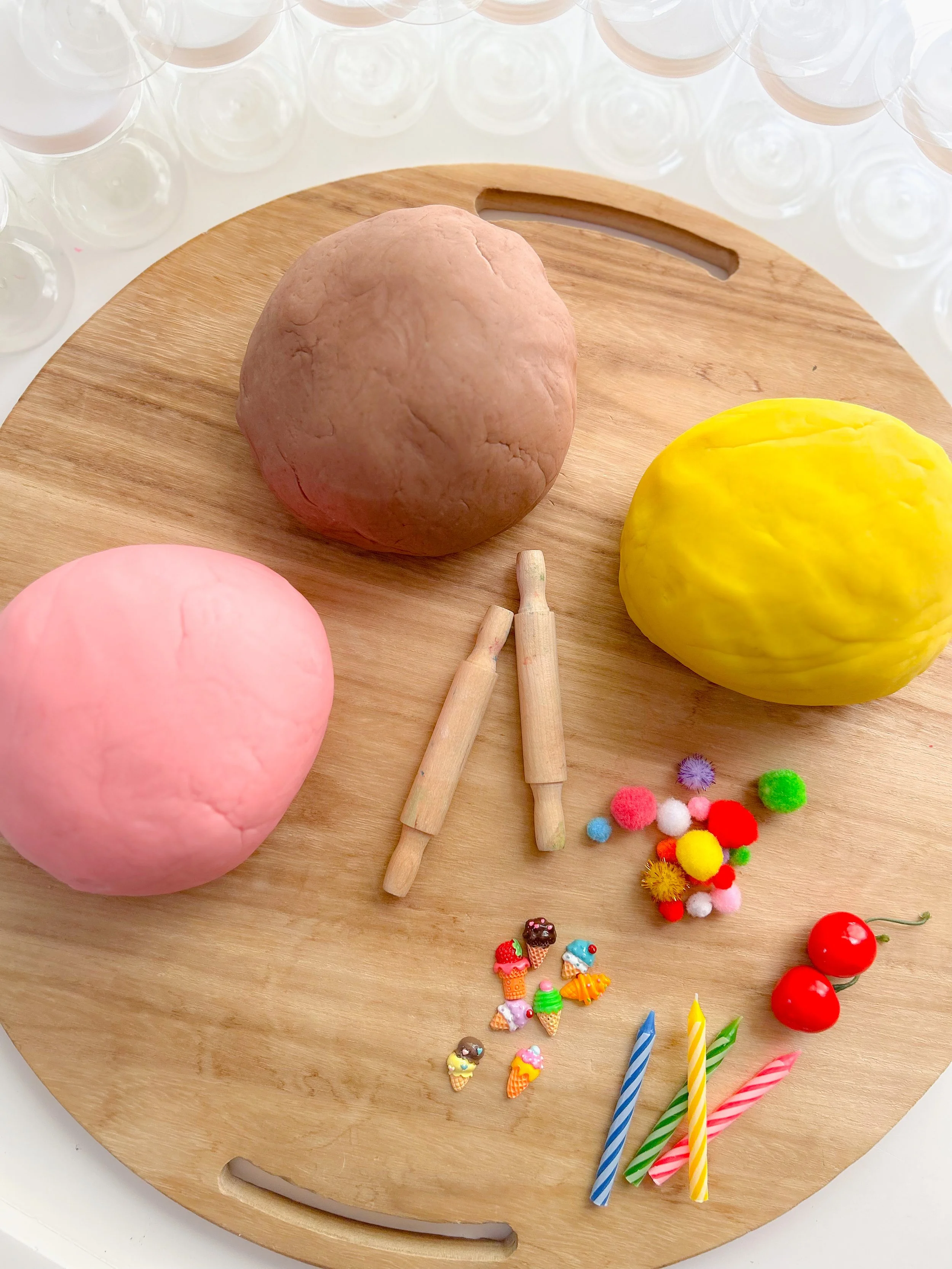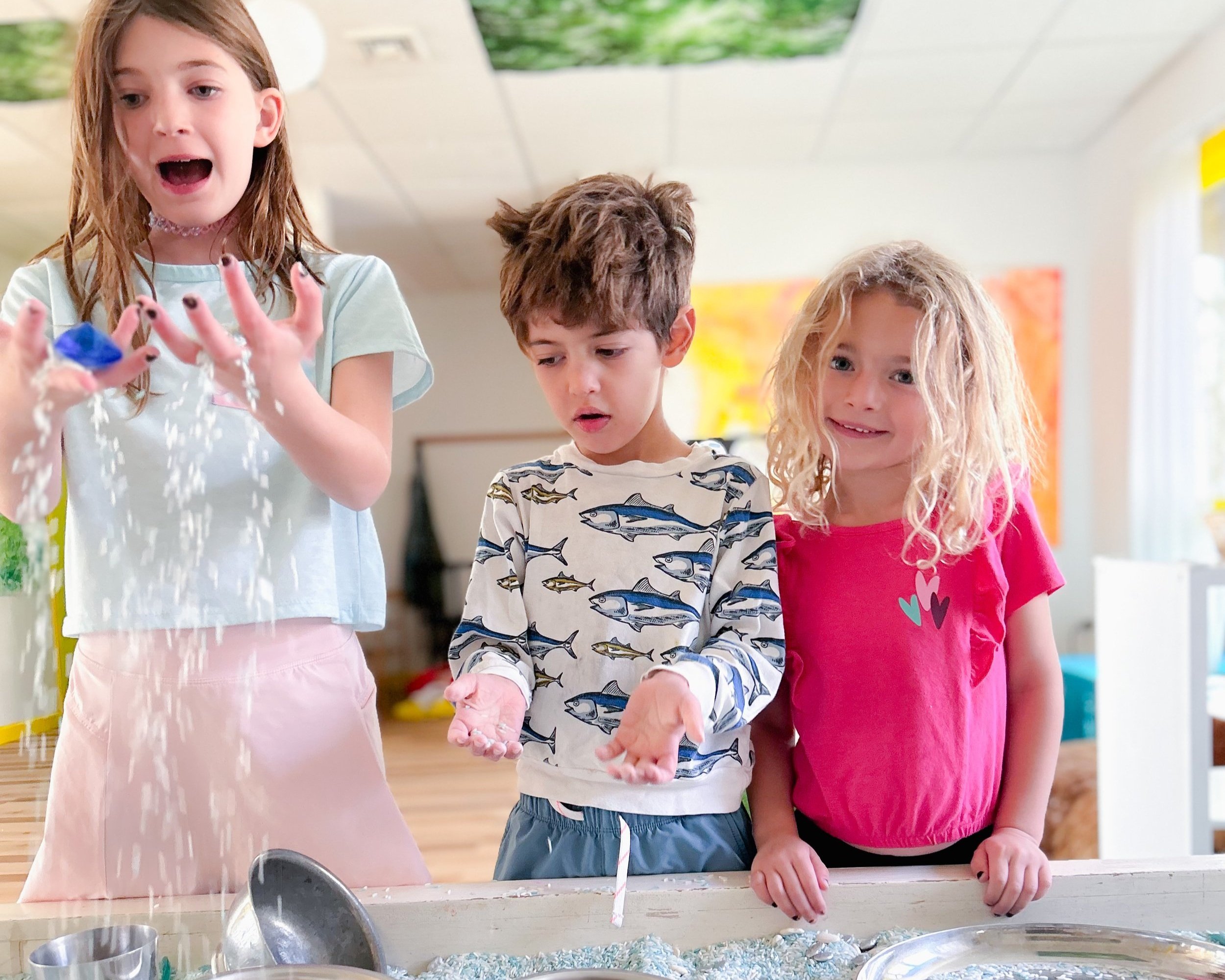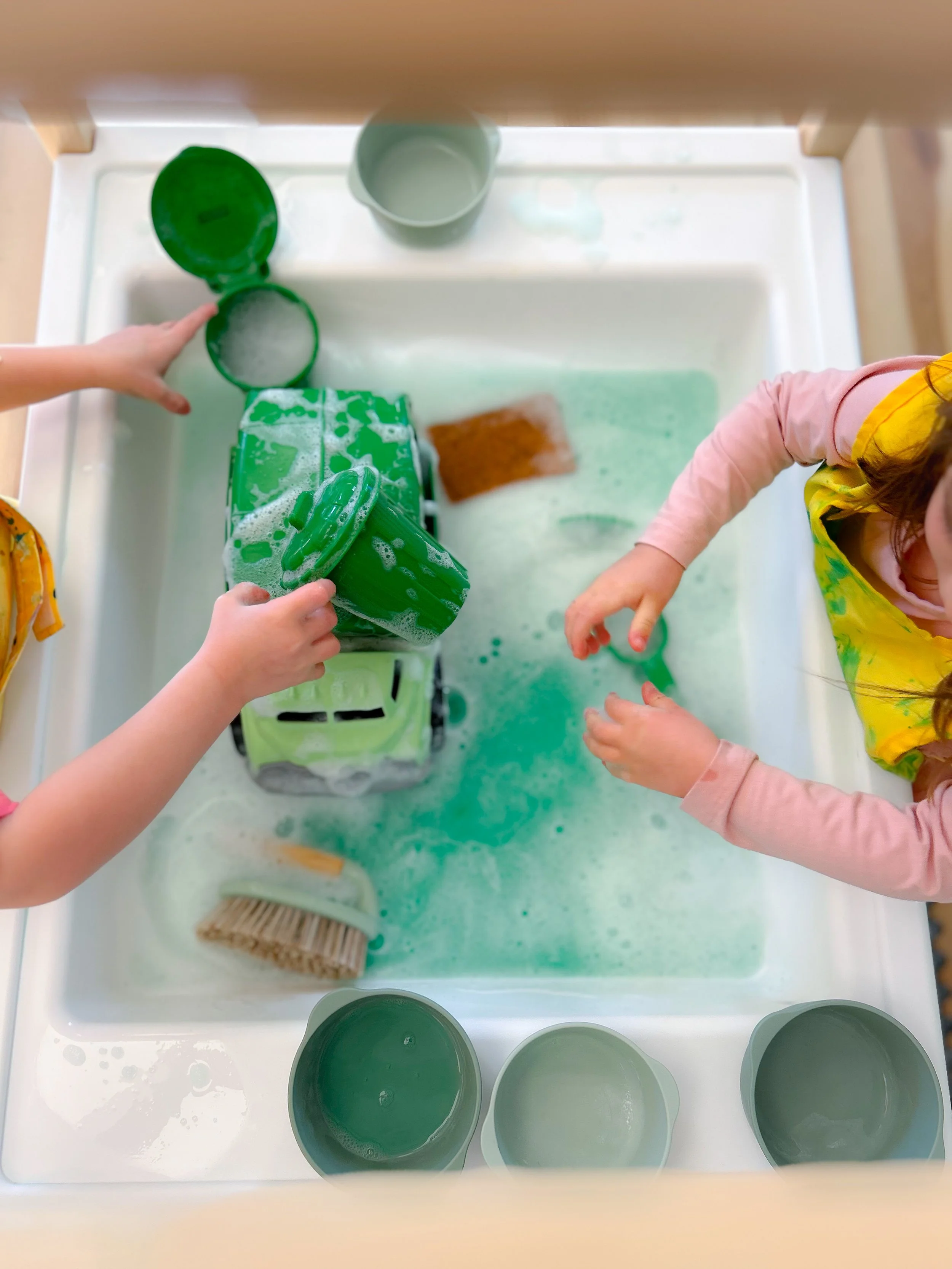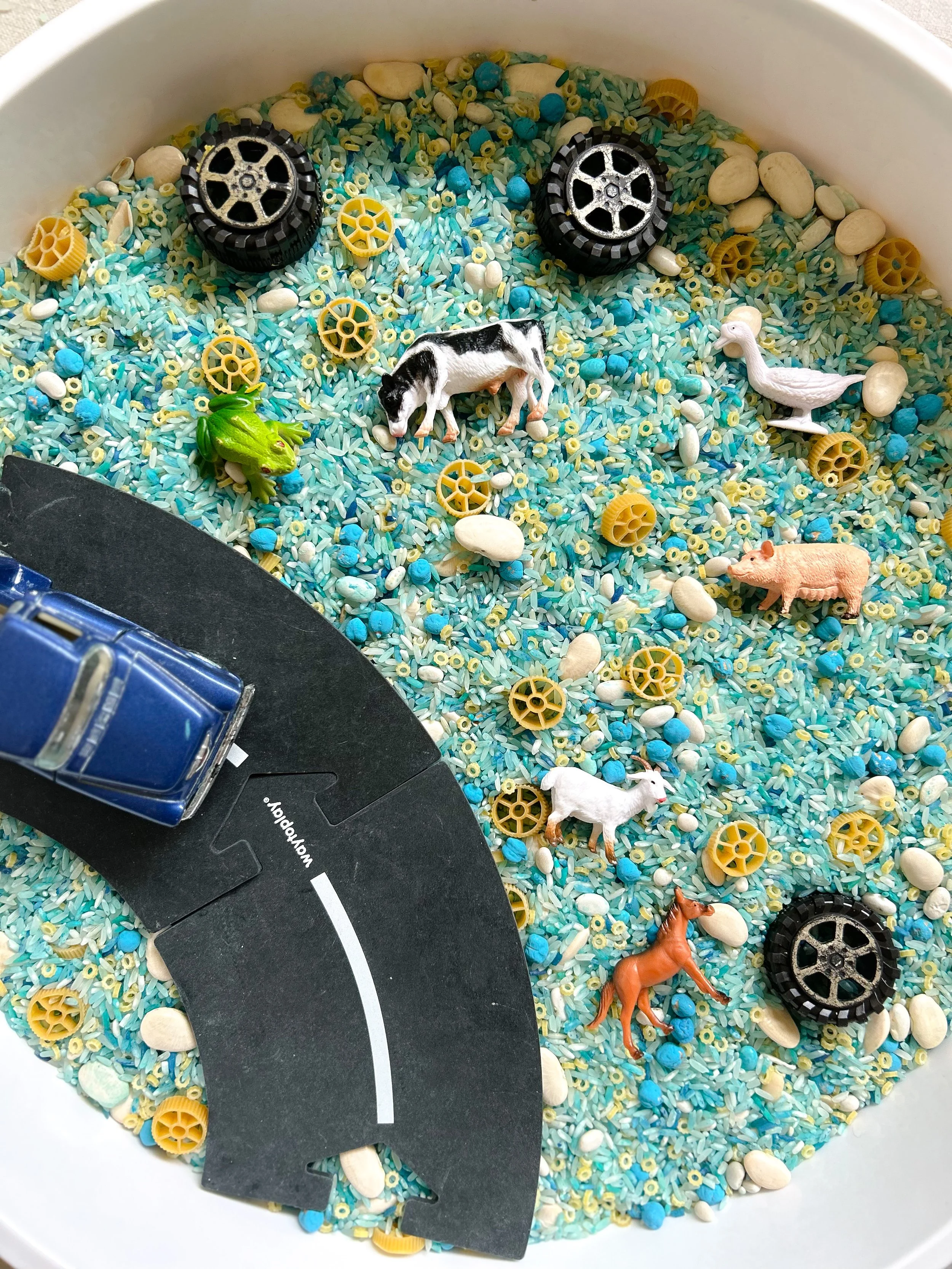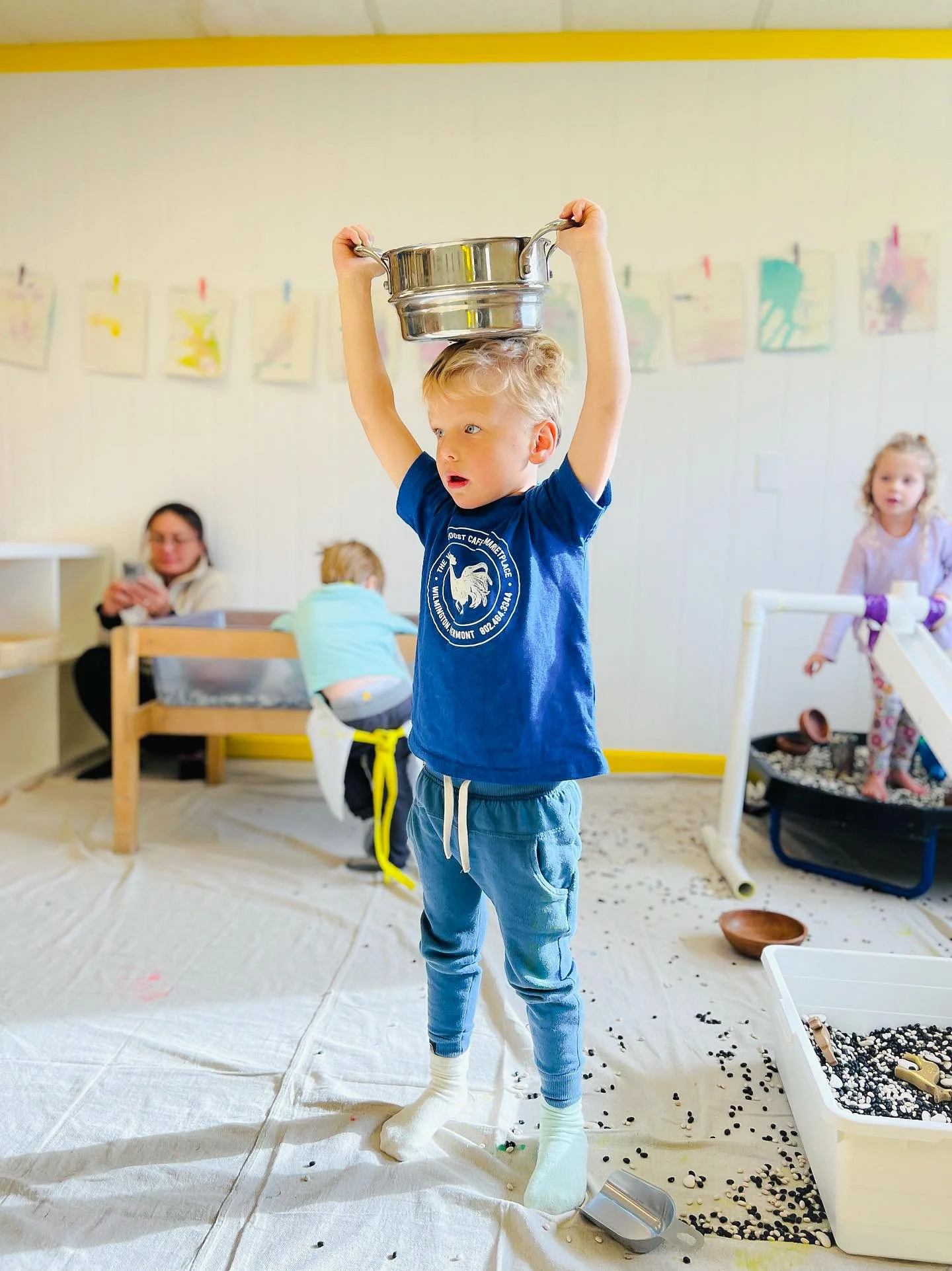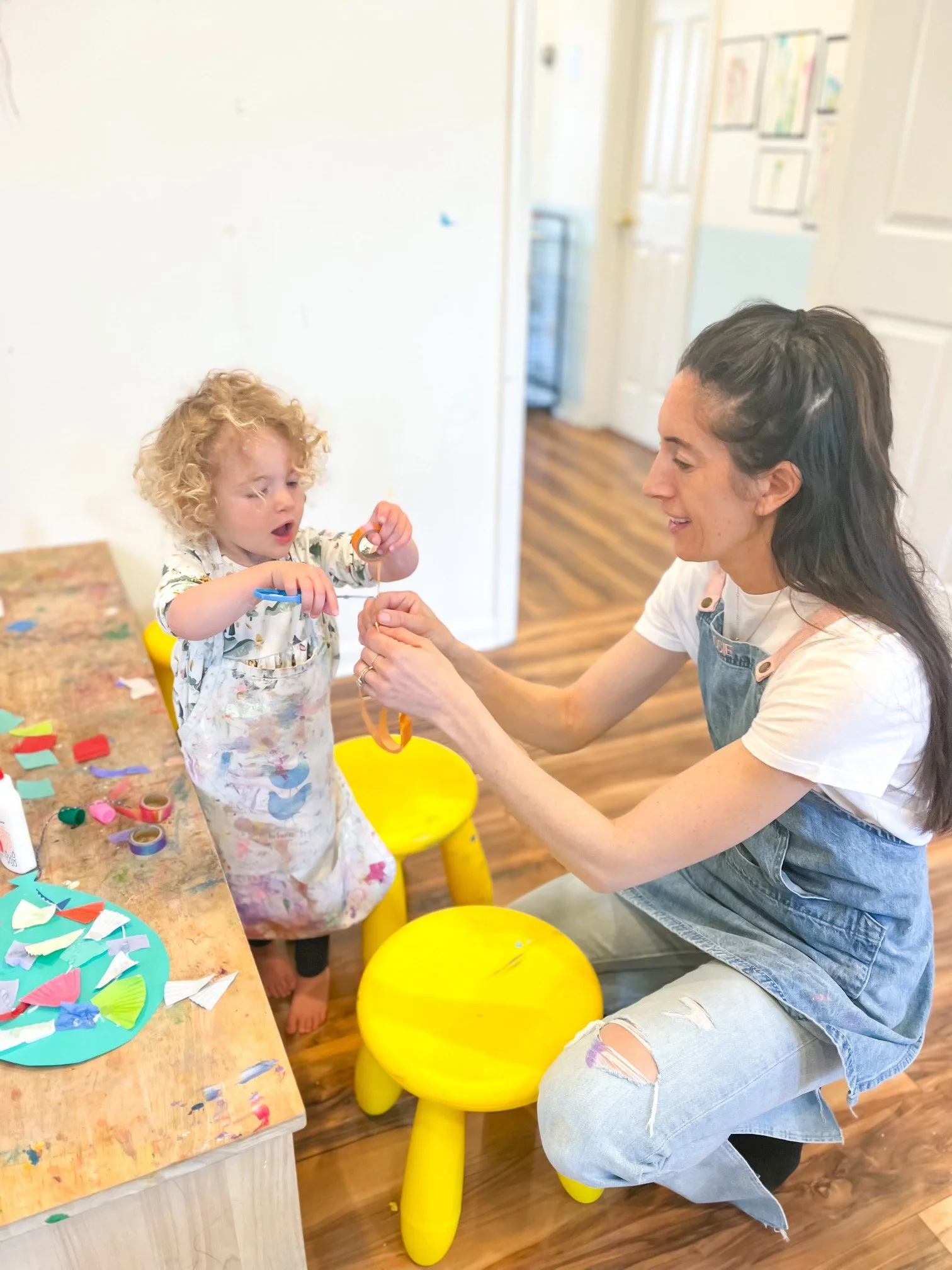Sensory Activities for Toddlers: 15 Easy Ideas to Try at Home
Hey there, amazing parents! It's Rosie here from Pop Art! Kids, and I know exactly what you're thinking: "Sensory activities sound great in theory, but what about the MESS?"
Trust me, I get it. At our Reggio Emilia inspired art studio, I hand 1.5-year-olds squeeze bottles of paint and watch 10 toddlers dive into 50+ pounds of dyed rice. Yes, it gets messy. Yes, it's worth it. And yes, you can totally do this at home (I promise the cleanup isn't as bad as you think!).
Your little one NEEDS sensory exploration. It's how their brain develops, how they learn about textures, cause and effect, and how the world works. Plus, let's be honest – sensory play often equals happy, engaged kids, which means a few minutes of peace for you.
So grab some towels, embrace the beautiful chaos, and let's dive into 15 sensory activities that actually work for real families with real toddlers.
Easy Sensory Art Activities for Toddlers
1. Yogurt Paint (Safe for Taste-Testers!)
What you need: Plain yogurt + food coloring Why it works: Safe for mouths, interesting texture, and the cool temperature is fascinating to little hands
The mess level: Medium – but it washes off everything easily
Mix a few drops of food coloring into individual containers of plain yogurt. Let your toddler finger paint on paper, plastic plates, or even the high chair tray. When they inevitably taste it (because of course they will), no worries!
2. Grain and Bean Mosaics
What you need: cookie cutters, wooden shapes, puzzle molds, or design your own with cardboard Why it works: Detail oriented and absorbing
The mess level: Low – contained on a tray
Create your structure or find cookie cutters or other frames around the house. Picture frames with no glass work well as a base. Use cardboard or clay to create a design. Offer corn, lentils, beans, rice to separate and create beautiful mosaic designs.
3. Bubble Wrap Printing
What you need: Bubble wrap + washable paint + paper
Why it works: Pop art vibes meet sensory satisfaction
The mess level: Medium – but so worth it for the giggles
Paint the bubble wrap, press paper on top, and peel away to reveal amazing textures. Your toddler will love the popping sounds and the surprise patterns that emerge. Very Kusama-inspired!
4. Mini Safari Sand Tray
What you need: Kinetic sand or regular play sand + shallow tray + small animals or toys
Why it works: Contained digging and imaginative play combined
The mess level: Medium – but stays mostly in the tray
Fill a shallow tray or large baking dish with kinetic sand (it sticks to itself, not your furniture!). Add small animals, cars, or toys for your toddler to hide and discover. They'll love the texture of the sand and the surprise of finding buried treasures. It's like a mini archaeological dig in your living room!
5. Texture Hunt Basket
What you need: Various textured items (sponges, fabric scraps, pinecones, smooth stones)
Why it works: Develops tactile awareness and vocabulary
The mess level: Low – just scattered objects
Fill a basket with safe items of different textures. Let your toddler explore each one, talking about "rough," "smooth," "bumpy," and "soft." Their little brains are making amazing connections!
aper to stick and restick. The light coming through creates beautiful stained glass effects.
No-Mess Sensory Activities for Toddlers
6. Paint in a Bag
What you need: Washable paint + gallon zip-lock bag + duct tape
Why it works: All the sensory fun of finger painting without the cleanup
The mess level: Zero mess!
Squirt paint into a sealed bag, tape it shut, and tape it to a window or high chair tray. Your toddler can squish and move the paint around, mixing colors and making patterns.
7. Sensory Bottles
What you need: Clear plastic bottles + various fillers (rice, buttons, glitter, water)
Why it works: Self-contained sensory exploration The mess level: Zero – if properly sealed!
Fill bottles with different materials and hot-glue the caps shut. Some can be calm-down bottles with glitter and oil, others can be noisy shakers with rice or buttons.
8. Contact Paper Art
What you need: Clear contact paper + tissue paper pieces
Why it works: Develops fine motor skills and color recognition
The mess level: Low – no glue needed!
Tape contact paper sticky-side out to a window or wall. Give your toddler pieces of colored tissue paper to stick and restick. The light coming through creates beautiful stained glass effects.
DIY Sensory Play Recipes
9. Scented Play Dough
What you need: Homemade play dough + vanilla extract (or other safe scents)
Why it works: Engages smell AND touch
The mess level: Low – contained and reusable
Add a few drops of vanilla, peppermint extract, or even a sprinkle of cinnamon to homemade play dough. The different scents add another layer of sensory exploration.
10. Finger Paint Recipe That Actually Washes Out
What you need: 1/2 cup cornstarch + 2 tbsp sugar + 2 cups water + food coloring + dish soap
Why it works: Smooth texture, vibrant colors, and easier cleanup
The mess level: High – but worth every colorful handprint
Cook the mixture until thick, add food coloring and a squirt of dish soap (for easier washing). This paint has an amazing silky texture that's different from store-bought versions.
11. Ice Painting
What you need: Ice cubes + liquid watercolors or food coloring
Why it works: Cold sensation plus art creation
The mess level: Medium – but it melts and dries
Freeze water with food coloring in ice cube trays, add popsicle sticks, and let your toddler "paint" on paper as the ice melts. The changing temperatures and disappearing colors are magical to little ones.
Outdoor Sensory Activities for Toddlers
12. Shaving Cream Exploration
What you need: Unscented shaving cream
Why it works: Fluffy, moldable, and completely fascinating
The mess level: Medium – but rinses away easily
Spray shaving cream directly onto the high chair tray or a plastic tablecloth on the floor. Let your toddler squish, pat, and explore. Add food coloring for extra fun!
13. Nature Texture Exploration
What you need: Various natural items (leaves, pinecones, flowers, smooth rocks)
Why it works: Free materials and connects kids to nature
The mess level: Low – natural materials are easy to clean up
Take a nature walk and collect interesting textures. Back home, let your toddler explore each item, talking about how they feel, smell, and look.
Sensory Play Ideas for Active Toddlers
14. Rice Sensory Bin
What you need: Uncooked rice + containers + scoops
Why it works: Great for pouring, scooping, and hiding treasures
The mess level: Medium – rice gets everywhere but vacuums up
Fill a large container with rice and add measuring cups, small toys to hide and find, or different sized containers for pouring. Yes, rice will end up on the floor. Yes, it's worth it.
15. Musical Sensory Play
What you need: Pots, pans, wooden spoons + various materials to drop in them
Why it works: Combines sound with movement and cause-and-effect learning
The mess level: Medium – more noise than mess!
Give your toddler pots and pans with different materials to drop in (rice, blocks, pom-poms). Each material makes different sounds, and the cause-and-effect learning is incredible.
Benefits of Sensory Play for Toddler Development
Look, I'm not going to pretend these activities don't make a mess. They do. But here's what I've learned from watching thousands of toddlers create and explore:
The mess is temporary. The learning is permanent.
Your toddler's brain is developing at lightning speed. These sensory experiences aren't just fun – they're building neural pathways, developing fine motor skills, and teaching them about the world through their most natural learning tool: their senses.
At Pop Art! Kids, we design our sensory stations with purpose. We want kids to explore, discover, and yes, get gloriously messy. Because that's where the magic happens. That's where your 2-year-old discovers that mixing yellow and blue makes green, or that rice feels different when it's moving versus when it's still.
So embrace the mess. Put down the towels. Take the photos. And remember – I'll gladly clean up any mess if you want to come experience this joy together at our studio!
Come Get Messy With Us!
Speaking of embracing the beautiful chaos – if you're in the Ridgefield or Wilton area and want to experience this sensory magic without the home cleanup, come visit us at Pop Art! Kids!
We've got all the messy fun ready to go, plus I'll handle every bit of the cleanup while you and your little one create memories together. It's the perfect way to try new sensory experiences and connect with other families who understand that the best learning happens when kids get their hands dirty.
Ridgefield Studio: 80 Grove Street, Ridgefield, CT (please enter from the back deck!) Wilton Studio: 196 Danbury Road, Wilton, CT (we're in the plaza to the right of Nova Cafe – entrance is in the front of the building)
Email me at rosie@popart.kids to learn more about our classes, or just drop by to see what Reggio-inspired sensory art looks like when you don't have to worry about your floors!
Trust me, watching your toddler discover that they can make purple by mixing red and blue finger paint – while someone else cleans up – is pretty much parent paradise.
Frequently Asked Questions About Toddler Sensory Activities
Q: At what age can kids start sensory activities? A: Even babies can enjoy gentle sensory experiences! We welcome children as young as 1.5 years old at Pop Art! Kids. Start simple with safe materials and always supervise.
Q: How do I contain the mess from sensory play? A: Use plastic tablecloths, set up activities outside, or confine them to the high chair tray. But honestly? Embrace the mess – it's temporary and the learning is incredible.
Q: Are these sensory activities safe for toddlers who put everything in their mouths? A: Absolutely! Many of our suggestions use edible materials (yogurt paint) or sealed containers specifically for this reason. Always supervise and choose age-appropriate materials.
Q: How long should sensory activities last for toddlers? A: Follow your child's lead! Some toddlers will explore for 5 minutes, others for 30. There's no "right" amount of time – just watch for their cues.
Q: What if my toddler doesn't want to get messy? A: Some kids need time to warm up to textures. Start with less messy options (sensory bags, contact paper art) and never force participation. Respect their comfort level.
Q: Do sensory activities really help with toddler development? A: Yes! Sensory play supports brain development, fine motor skills, language development, problem-solving skills, and emotional regulation. It's learning disguised as play.
Q: How often should we do sensory activities with toddlers? A: As often as you and your child enjoy them! Daily sensory experiences are wonderful, but even a few times a week makes a difference.
Q: What's the easiest cleanup tip for sensory play? A: Set up near a sink, have wet wipes ready, and remember that most sensory materials wash off with soap and water. The anticipation of cleanup is usually worse than the actual cleanup!

